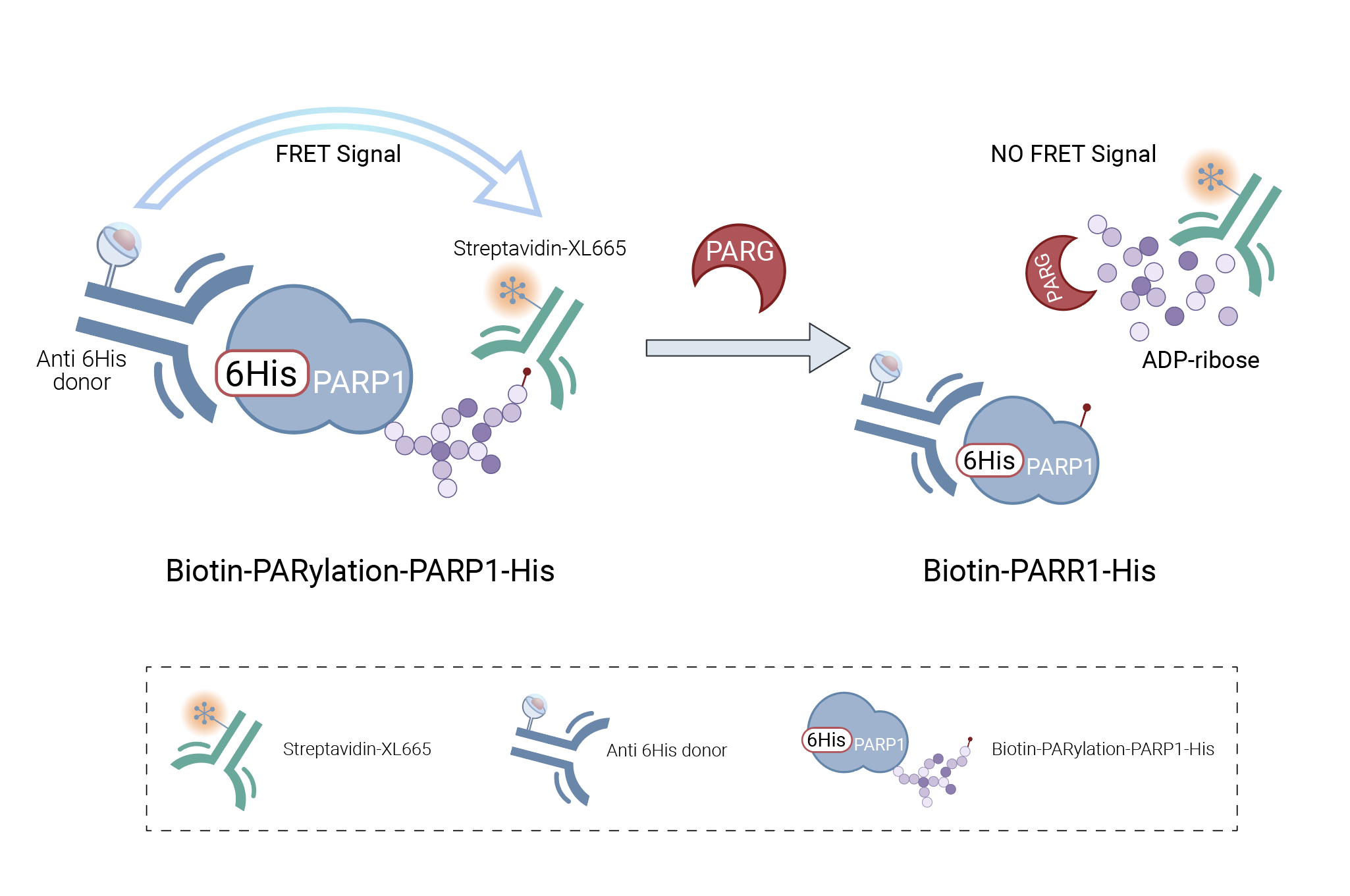Poly (ADP-ribose) polymerase inhibitors (PARPi) were the first clinically approved drugs that exploited synthetic lethality in cancer treatment, particularly targeting tumors with homologous recombination deficiencies (HRD). However, many tumors develop resistance to PARPi, often by restoring HR capacity, which highlights the need for new approaches to treat HR-deficient cancers. Targeting Poly (ADP-ribose) glycohydrolase (PARG) offers a promising alternative. PARG plays a critical role in the DNA damage response by degrading PAR chains generated by PARP1/2 activity, which aids in the dissociation of DNA repair complexes from chromatin. Inhibiting PARG can enhance the therapeutic effect of synthetic lethality, offering a complementary approach to HRD-targeted therapies.
Our PARG Surface Plasmon Resonance (SPR) Binding Assay is designed to evaluate the binding affinity and kinetics of small molecules to PARG. We use PDD0017273 as the reference compound.
We provide a high-sensitivity, non-radioactive method to monitor PARG activity and assess its modulation by potential inhibitors. Using TR-FRET (Time-Resolved Fluorescence Resonance Energy Transfer) technology.
Assay Principle
This assay evaluates the enzymatic activity of PARG and screens for potential PARG inhibitors using TR-FRET technique. The system incorporates Biotin-PARylated-PARP1-His, which binds to Anti-6His donor and Streptavidin-XL665 acceptor. Upon binding, FRET occurs, generating a measurable fluorescence signal.
When PARG is introduced, it cleaves the poly (ADP-ribose) chains, disrupting the FRET interaction and causing a decrease in fluorescence signal.
The assay also includes PARG inhibitors, such as PDD00017273, as controls. By adjusting inhibitor concentrations, the assay demonstrates the inhibitors' impact on PARG activity, allowing for precise evaluation of their inhibitory potency.

We value your inquiries and are here to provide you with tailored solutions for your drug discovery and development needs. Whether you have questions, require more information, or are interested in discussing potential collaborations, our team of experts is just a message away.
Feel free to reach out to us.